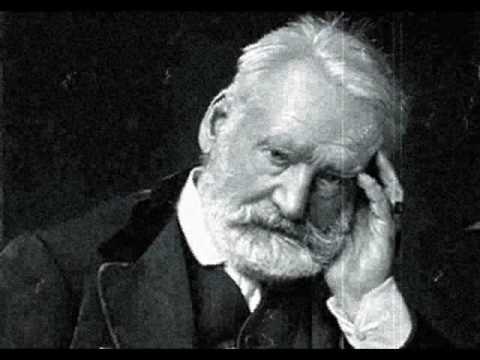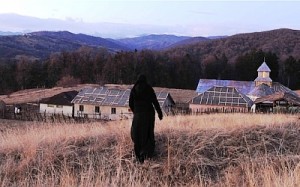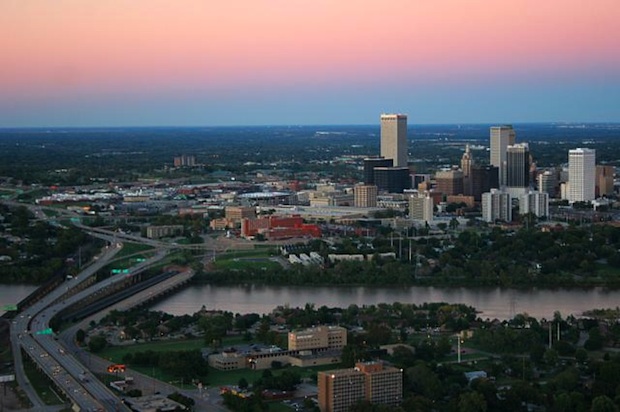The Secret Pleasures (2002) Watch onlineJames Webb Space Telescope is so powerful that it can vividly see stars in a galaxy 17 million light-years away.
Astronomers pointed the most advanced space observatory ever built at the galaxy NGC 5068, peering deep into its starry core. The greater goal is to better grasp how stars, like our energy-providing sun, form and evolve in galaxies. Crucially, Webb views a type of light that's invisible to the naked eye, called infrared light. These long infrared light waves pierce through thick clouds of cosmic dust and gas, allowing us unprecedented views into galactic hearts.
"With its ability to peer through the gas and dust enshrouding newborn stars, Webb is the perfect telescope to explore the processes governing star formation," the European Space Agency, which collaborates on the telescope with NASA and the Canadian Space Agency, wrote. Solar systems born enveloped in cosmic dust simply can't be seen with visible light telescopes like Hubble, the space agency said.
In the image below, Webb peered through "gargantuan clouds of dust." Here's what you're seeing:
The radiant white bar is the galaxy's core. Similar to the Milky Way, NGC 5068 is a barred spiral galaxy, meaning it has a long bar-shaped structure at its center, which is composed of densely-packed stars.
All those bright dots both in the core and populating the image are stars. Many thousands are visible. And though we can't see them, many of those stars almost certainly harbor wild, exotic planets.
On the right is a curving, spiral arm of the galaxy. (In our galaxy, Earth inhabits the farther-reaches of a spiral arm.)
The general skeletal-like structure in the galaxy is made from colossal clumps and filaments of dust, the ESA explains.
 A highly-detailed view into the center the spiral galaxy NGC 5068. Credit: ESA / NASA / CSA / J. Lee and the PHANGS-JWST Team
A highly-detailed view into the center the spiral galaxy NGC 5068. Credit: ESA / NASA / CSA / J. Lee and the PHANGS-JWST Team This Tweet is currently unavailable. It might be loading or has been removed.
The Webb telescope is designed to peer into the deepest cosmos and reveal unprecedented insights about the early universe. But it's also peering at intriguing planets in our galaxy, and even the planets in our solar system.
Want more scienceand tech news delivered straight to your inbox? Sign up for Mashable's Light Speed newslettertoday.
Here's how Webb is achieving unparalleled things, and likely will for decades:
Giant mirror: Webb's mirror, which captures light, is over 21 feet across. That's over two and a half times larger than the Hubble Space Telescope's mirror. Capturing more light allows Webb to see more distant, ancient objects. As described above, the telescope is peering at stars and galaxies that formed over 13 billion years ago, just a few hundred million years after the Big Bang.
"We're going to see the very first stars and galaxies that ever formed," Jean Creighton, an astronomer and the director of the Manfred Olson Planetarium at the University of Wisconsin–Milwaukee, told Mashable in 2021.
Infrared view: Unlike Hubble, which largely views light that's visible to us, Webb is primarily an infrared telescope, meaning it views light in the infrared spectrum. This allows us to see far more of the universe. Infrared has longer wavelengths than visible light, so the light waves more efficiently slip through cosmic clouds; the light doesn't as often collide with and get scattered by these densely packed particles. Ultimately, Webb's infrared eyesight can penetrate places Hubble can't.
"It lifts the veil," said Creighton.
Peering into distant exoplanets: The Webb telescope carries specialized equipment called spectrometersthat will revolutionize our understanding of these far-off worlds. The instruments can decipher what molecules (such as water, carbon dioxide, and methane) exist in the atmospheres of distant exoplanets — be it gas giants or smaller rocky worlds. Webb will look at exoplanets in the Milky Way galaxy. Who knows what we'll find.
"We might learn things we never thought about," Mercedes López-Morales, an exoplanet researcher and astrophysicist at the Center for Astrophysics-Harvard & Smithsonian, told Mashable in 2021.
Already, astronomers have successfully found intriguing chemical reactions on a planet 700 light-years away, and the observatory has started looking at one of the most anticipated places in the cosmos: the rocky, Earth-sized planets of the TRAPPIST solar system.
 The Made in America iPhone: How much would it cost?
The Made in America iPhone: How much would it cost?
 Barnaby Conrad: Author, Matador, Bon Vivant, and Thorn in Hemingway’s Side by Lesley M.M. Blume
Barnaby Conrad: Author, Matador, Bon Vivant, and Thorn in Hemingway’s Side by Lesley M.M. Blume
 Essex Girl by Zakia Uddin
Essex Girl by Zakia Uddin
 Golden Books by Sadie Stein
Golden Books by Sadie Stein
 Best Hydro Flask deal: Save $10 on a 24
Best Hydro Flask deal: Save $10 on a 24
 Bookish Cakes, and Other News by Sadie Stein
Bookish Cakes, and Other News by Sadie Stein
 Shakedown: Cossery in Egypt by Mostafa Heddaya
Shakedown: Cossery in Egypt by Mostafa Heddaya
 Happy Birthday, Victor Hugo by Sadie Stein
Happy Birthday, Victor Hugo by Sadie Stein
 Operation Rock Wallaby rains food down on wildlife hurt by bushfires
Operation Rock Wallaby rains food down on wildlife hurt by bushfires
 What We’re Loving: Romanian Cinema, African Art by The Paris Review
What We’re Loving: Romanian Cinema, African Art by The Paris Review
 The Baffler’s May Day Round Up
The Baffler’s May Day Round Up
 Happy Birthday, Victor Hugo by Sadie Stein
Happy Birthday, Victor Hugo by Sadie Stein
 March Madness by Sadie Stein
March Madness by Sadie Stein
 Chinua Achebe, 1930–2013 by Sadie Stein
Chinua Achebe, 1930–2013 by Sadie Stein
 Skywatching is lit in May, says NASA
Skywatching is lit in May, says NASA
 Maps by Ben Lytal
Maps by Ben Lytal
 Happy Birthday, Elizabeth Barrett Browning by Sadie Stein
Happy Birthday, Elizabeth Barrett Browning by Sadie Stein
 Story Time! by Sadie Stein
Story Time! by Sadie Stein
 Instagram tests Storylines, a collaborative twist on Stories
Instagram tests Storylines, a collaborative twist on Stories
 Digital Book Signings, and Other News by Sadie Stein
Digital Book Signings, and Other News by Sadie Stein
A Pocket Atlas of Remote IslandsAt the MetA Pocket Atlas of Remote IslandsQueen Bitch: Alex Abramovich on David BowieTropicana's cereal made for orange juice is just so wrongShark FlexStyle Prime Day deal: Snag this Dyson Airwrap dupe for under $300Snag a refurbished Xbox Series X for $399.99 on Prime DayHow to reset your Instagram passwordToo Clever: Oscar Wilde the PlagiaristHustle and Trust: Notes on the Knicks (and Edmund Spenser)Here’s a List of Truly Awful SimilesBest Dyson Prime Day deals: Save up to $170 on Dyson cordless vacuums at WalmartHow Sarah Meyohas Uses Art to Play the MarketAt the MetI Lost an Idea Last NightI Lost an Idea Last NightGoogle AI's Flood Hub predictor prepares for flooding in U.S. and CanadaAt the MetBest Prime Day noise canceling headphones deal: $100 off Sony WHAir fryer donuts from TikTok are delicious. Because of course they are. Don't You Forget About Me by Jason Diamond What We’re Doing: Not Staying in Room 1212 Jane Austen Unmentionables, and Other News by Sadie Stein When to wear a double mask for protection from a coronavirus infection Imaginary Extensions: A Conversation with Caleb Crain On Occasion, I Write Pretty Well In the Ninth by Mark Chiusano On Footnotes The Sunday Scaries hit different in a pandemic. Here's how to help ease them. Sketches from the Trial of Bradley Manning by Molly Crabapple John Hollander, 1929–2013 by Sadie Stein What We’re Loving: Pulp Fiction, Struggles, Kuwait by The Paris Review 'Quordle' today: See each 'Quordle' answer and hints for July 6 'Insidious: The Red Door' review: A fine final chapter to close The Further Commercial Fan Fiction by Sadie Stein Dr. Fauci has some simple, lucid Super Bowl advice To Be or Not To Be? And Other News by Sadie Stein Jeff Bezos stepped down as Amazon CEO and the jokes were delivered instantly Tonight! The Paris Review on Charlie Rose by Justin Alvarez A Week in Culture: Sophie Pinkham, Moscow and Kiev by Sophie Pinkham
2.4219s , 10132.8984375 kb
Copyright © 2025 Powered by 【Secret Pleasures (2002) Watch online】,Pursuit Information Network